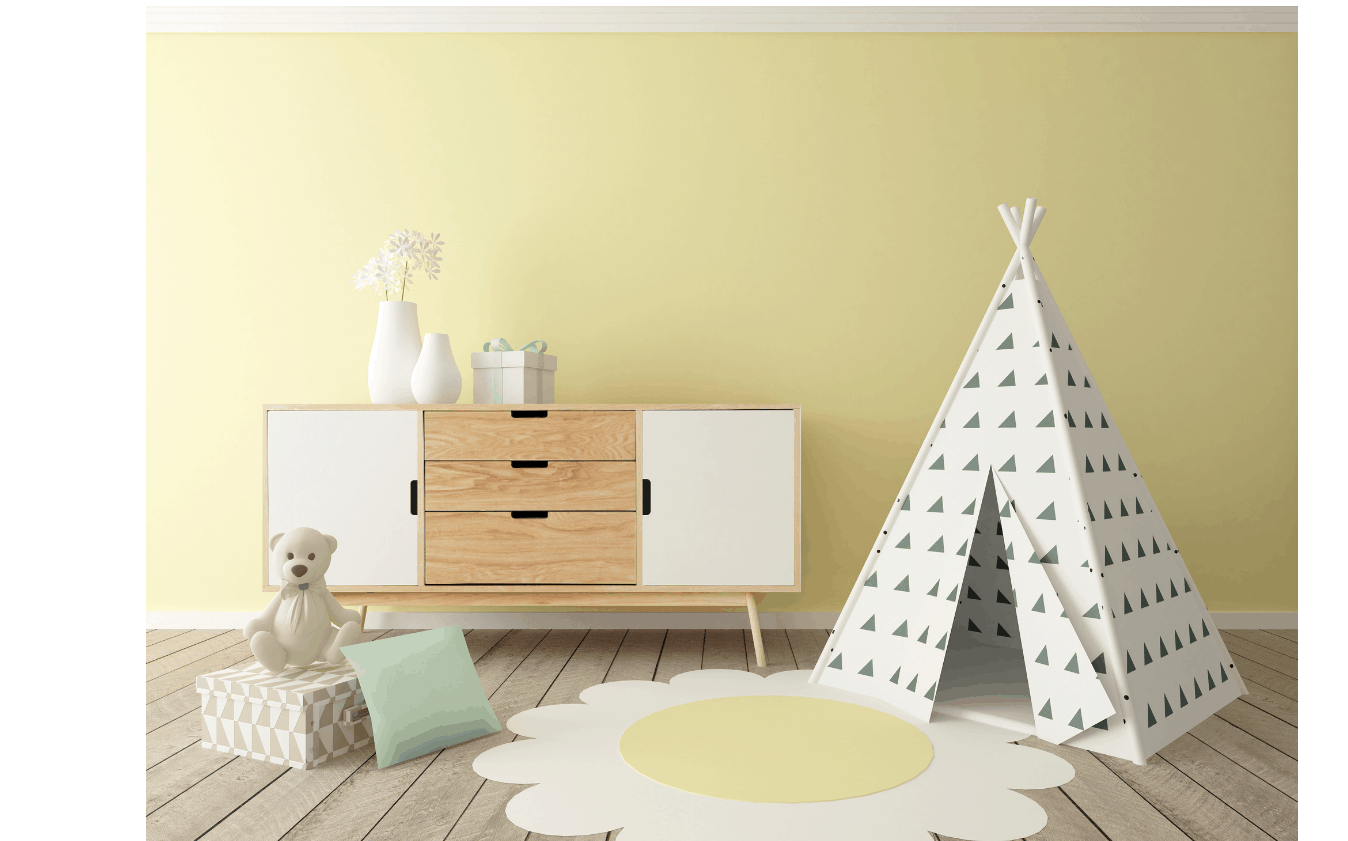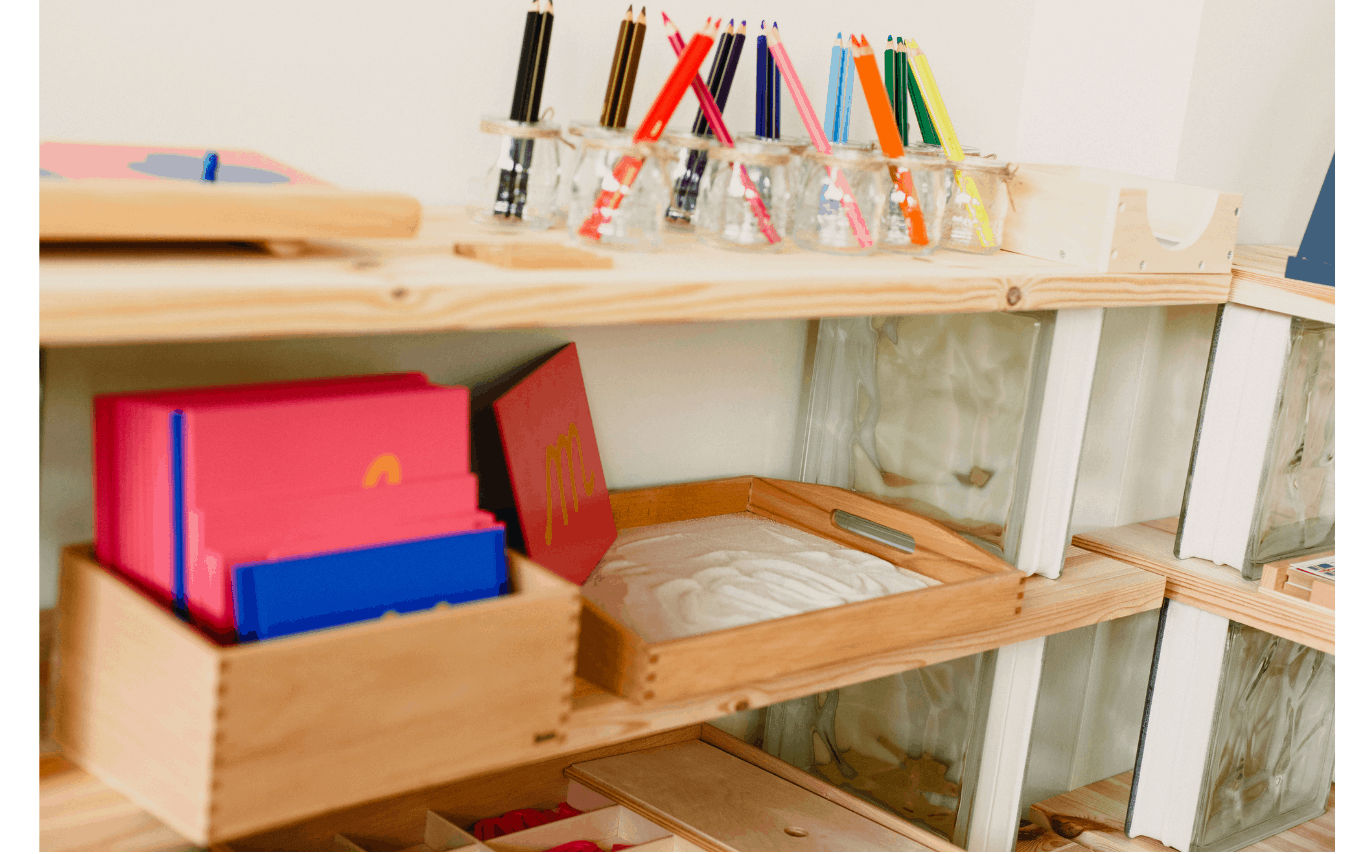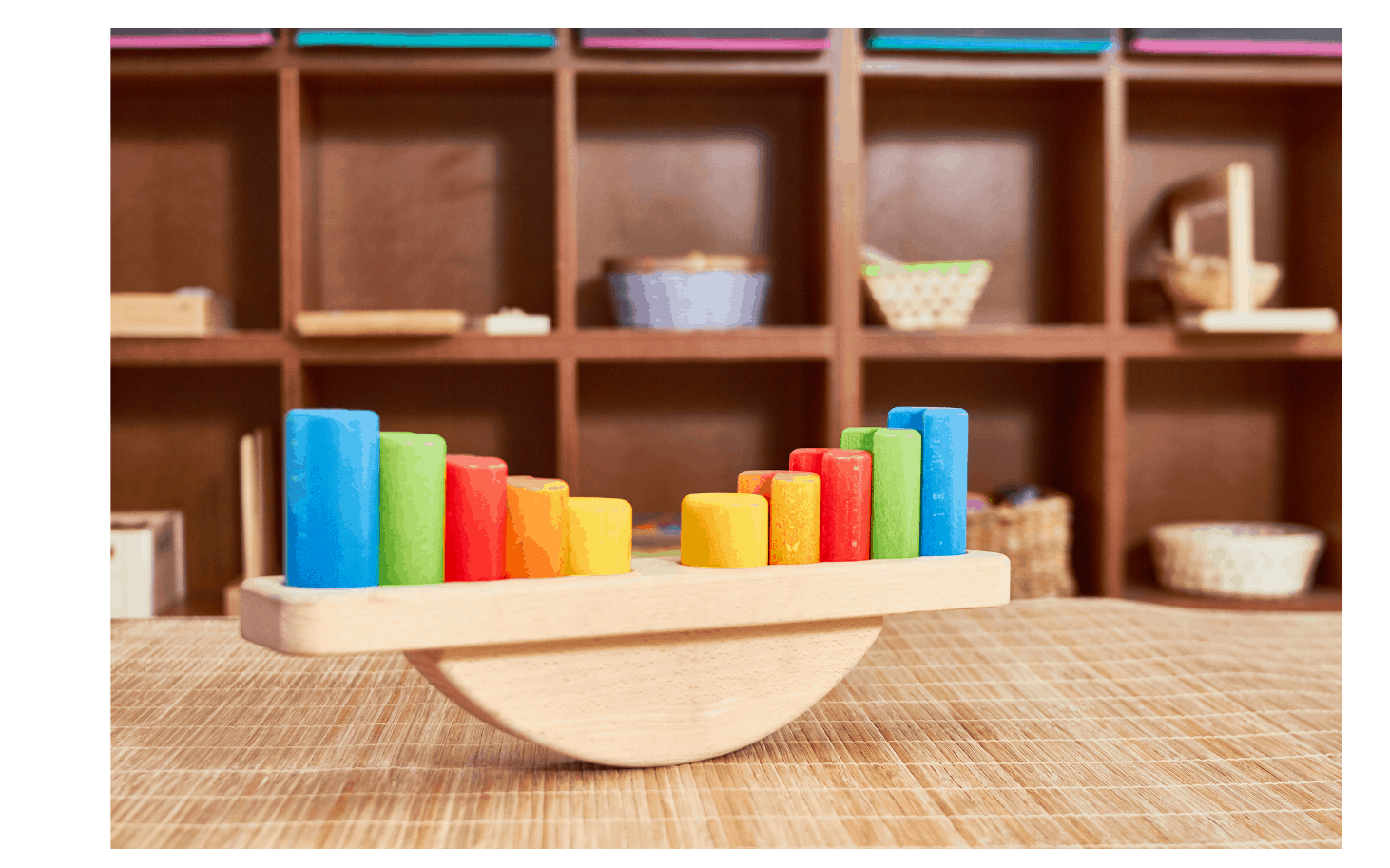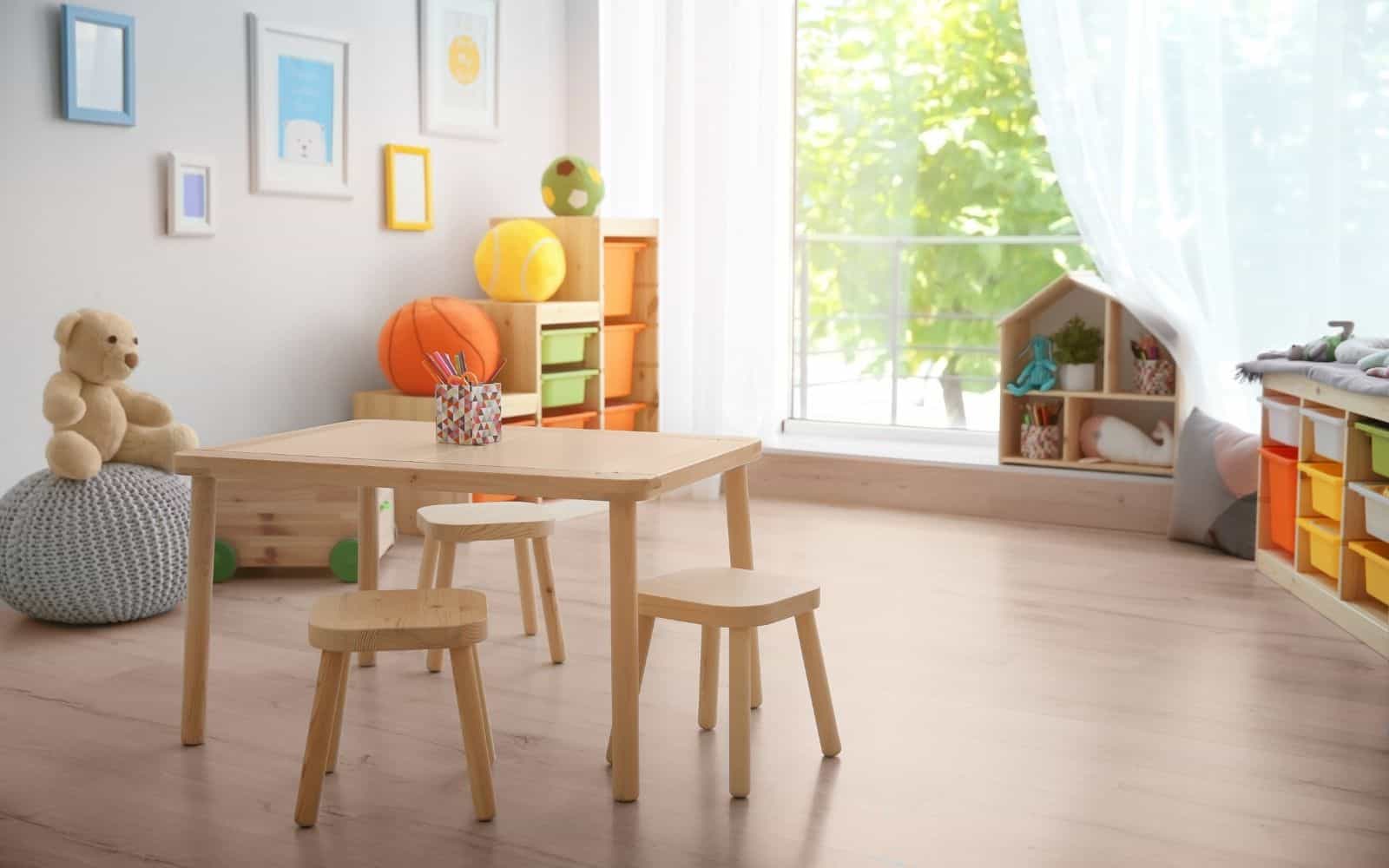Creating a Montessori playroom in your home is actually much easier than you may think! Here is a short and sweet guide to creating a play space that is perfectly geared for learning, empowerment, and fun!
Montessori playrooms are simple, organized, and truly child-friendly. A simple space also allows them to deeper explore their toys and activities without distraction. This keeps them engaged with their toys longer – Allowing them to fully master each skill before they are rotated out.
By creating a space that is welcoming to your little one, they will be both comfortable in their space and ready to learn!
A well-organized child’s Montessori playroom promotes independence, too. Nurturing a child’s autonomy is at the heart of Montessori, after all!

Montessori playrooms: the basics
Montessori style playrooms are decorated with lots of natural materials, like wooden toys, and child sized furniture. The space is designed to promote engagement while favoring the child’s current interests. By using small furniture made from natural materials, everything is within the child’s reach. As an added bonus, much of the materials are environmentally friendly, too.
Here are three key things to keep in mind while designing your child’s play space:
Simplicity & a cozy space
Simple doesn’t mean boring – In fact, it’s quite the opposite! In a playroom, simplicity increases your child’s interest in their toys and reduces distractions and upset caused by overstimulation.
Making a cozy space for your little one make their space comfortable and enjoyable to be in. You may consider including a cozy reading corner for when they want some independent play and reading time, too.
Keep these tips in mind while simplifying your space:
- Limited options: Try to aim for 10 toys (or less) at any given time. Each activity should be engaging and interesting to them. Provide options that work on both their fine and gross motor skills, but only offer a limited number of toys and activities at any given time.
- Having a limited number of toys displayed nicely will also help keep your Montessori playroom organized, too! You can also rotate toys once your child begins losing interest in any one item.
- Open play space: If you can, try to create an open space for play and movement. Here your child can deeply explore their toys without distraction from other objects. Providing space for stretching, jumping, climbing, and crawling also lets them develop both their fine and gross motor skills.
- Try to have a climbing structure available in their play area to encourage active play, too.

Playroom organization
Children flourish within routine and order. Providing a playroom that is organized and intentional appeals to their natural sense of order while promoting the independence of the child.
As a bonus? They will soon learn to tidy up after themselves! This is every parent’s dream, right?!
Here are some tips:
- A place for everything, and everything in its place: Each toy and activity should have a clearly defined ‘home’. If it’s easy to tell where a toy belongs, it’s easier for your child to put it back themselves once they are ready for the next activity.
- Place age-appropriate toys at the child’s level. This will encourage children to engage with toys and activities of their interest, which is an important component of a Montessori inspired playroom
- To help encourage this with young toddlers, try saying “It looks like you’re done playing with your [blocks]! Let’s put them away before choosing another toy!”
- Older children would benefit from statements like “Oh! I see [puzzle pieces] on the ground – Do you know where these belong?”
- Variety: Try to offer different options and toys that develop a range of skills. There are tons of Montessori options for math, sensory, music, language, etc! This way, your child can develop multiple skills each week
Creating a child-friendly space
You want your little one to feel empowered in their space. This means giving them access to their toys without help from adults.
If you aren’t sure whether they can reach, see, or interact with something – Physically get down on their level and see!
To create a child-friendly Montessori playroom, try incorporating these tips:
- Toys within reach: Again, Montessori playrooms encourage freedom and independence. Shelving should be at their height and everything displayed at their level
- Engagement over entertainment: You’ve likely noticed the natural, minimalistic design of Montessori toys and furniture. If so, you’ve likely also wondered about the contrast between those and the many noisy toys with lots of lights and movements that are popular on the market today. While entertaining, these lights and noises are actually pretty distracting
- Age-appropriate Montessori toys, on the other hand, inspire creative play alongside development of gross and fine motor skills. Children practice using their imagination while fully exploring each toy’s function – Without distraction!
- This doesn’t mean that your child’s playroom cannot have plastic toys. But, the Montessori method avoids electronic toys. Wood toys and activities that encourage creativity are common Montessori playroom activities.
- Consider your Child’s Individual Interests: Be cognizant of their likes, interests, and skills! For example, if you notice them constantly reaching for music toys, then try to provide multiple different ways for them to practice this skill on any given rotation
- Art/Decor: Try to keep these at the child’s level, too! This lets them appreciate and engage with the art around them without having to be lifted up by an adult

Let’s talk toy rotation!
I mentioned above that limiting toy options is important. Only having around 10 items for your child to play with may sound extreme. But, this isn’t to say that you can’t have more than that! It just means only have 10 at one time.
The logic here is pretty simple: Since each activity in your child’s play space should be visible at all times, they will more actively engage with their toys rather than forgetting about them when they’re stuck at the bottom of a toy box.
Try switching out your activities weekly (or bi-weekly for some of their favorite activities!). This will keep your children excited about the toys available to them.
Here are some classic Montessori toys to add to your playroom.

Furniture and organization
Honestly, this topic requires an article of its own!
But, for now, there are a few staples in most Montessori playrooms that you should consider. Shelving, trays, bookshelves, and activity tables are some of the first ideas that come to mind for me. Surfing around the internet and in your local stores will give you a better idea of which of these you can incorporate into your home! Here are some great playroom storage ideas and Montessori furniture options.
Above all: Do what you can
The goal here is really to create a space that works for you and your family. Always remember – Montessori looks different in each home.
At the end of the day, always do what works best for you! If you can’t afford the expensive wooden Montessori toys, then absolutely DIY them or choose cheaper alternatives.
If you don’t have the space to split the playroom from your living room, then blend them! Just try to create a space specifically designated for your child, no matter the size. Even an activity corner or a small child sized table would be beneficial for them.

Leave a Reply